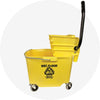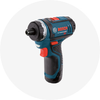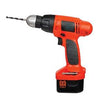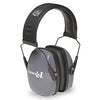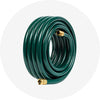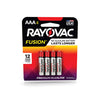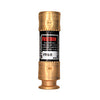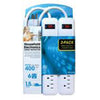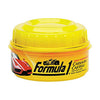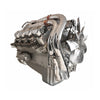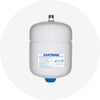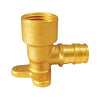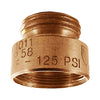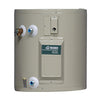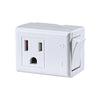Paint pad vs. roller: which is better for painting?
∙ min read
When it comes to painting homes, different tools can be used, and the choice of these tools depends significantly on the type of surface and the area to be covered to achieve exceptional results.
Two of the most common options are paint pads and rollers. Each of these tools can make a difference in efficiency and finish quality. In this article, you will learn about the benefits of both options. Is one better than the other?Advantages of paint pads
-
Uniform coverage: paint pads are designed to apply the paint evenly across a surface. The foam or plush pad distributes the paint evenly, resulting in better coverage, especially in corners.
-
Less splatter and drip: tend to be more precise than rollers, reducing the likelihood of splashing or dripping. This helps clean the work area, prevents stains on unwanted surfaces, and minimizes paint waste.
- Easy to use: don't require advanced skills to use, and there's no need to reload paint like with rollers constantly.
-
Faster drying time: because paint pads apply a thinner layer of paint than other tools, the painted surface tends to dry faster.
-
Versatility: can be used on various surfaces, including walls, ceilings, furniture, and other objects. You can use them indoors and outdoors, depending on the type of pad and paint you choose.
-
Some recommendations:
-
Shur-Line 9 in. W Applicator For Flat Surfaces: ideal for edging window and door trim, among other straight-line areas.
-
Shur-Line Refill 3.25 in. W Applicator For Corners/Edges: has a woven pad that fits snugly against the top of the corner for a one-pass application in inside corners.
-
Linzer Pro Edge Refill 5 in. W Paint Edger For Flat Surfaces: use with a squeeze to release technology. Perfect for eliminating the need for taping.

Advantages of using a paint roller
-
Quick coverage: they are excellent for covering large areas quickly and efficiently due to their cylindrical design and ability to hold a more significant amount of paint than brushes.
-
Smooth finish: by distributing paint evenly and consistently across the surface, paint rollers help eliminate uneven marks, resulting in a more uniform finish and professional appearance.
- Versatility: paint rollers can be used on various surfaces, including walls, ceilings, floors, wood, plaster, and more. Different rollers are available, such as long-haired rollers for rough surfaces and foam rollers for smooth surfaces.
-
Increased efficiency: due to their ability to cover larger areas quickly, rollers can increase efficiency compared to other tools, which is especially useful for large projects or when there's limited time to complete the work.
-
Easy to use: with some practice and proper technique, you can achieve satisfactory results with paint rollers. In addition, most rollers are lightweight and have ergonomic handles that make them easy to handle during extended work periods.
-
Some recommendations:
-
Paint Roller ArroWorthy Microfiber 9 in. W X 9/16 in: made with a special blend of high capacity non-shedding European woven fabric, it is good for all paints and stains, especially new low VOC coatings.
-
Paint Roller Cover Wooster Pro/Doo-Z FTP Synthetic Blend 9 in. W X 3/8 in: has everything you want in a roller for awless results. It makes painting more manageable because there’s no need to go back and rework an area to get perfect coverage.
-
Paint Roller Cover Purdy Colossus Polyamide Fabric 9 in. W X 1/2 in: high capacity roller covers that load and releases an exceptional amount of paint. Made of an exclusive formulation of 100% polyamide, lays paint off very smoothly and carries a remarkable amount of material to the surface without dripping or splattering.

While rollers have many advantages, it's essential to consider that they may not be appropriate for all situations. For example, narrow or hard-to-reach areas may require brushes, paint pads, or smaller brushes.
By considering the specific needs of your painting project and the advantages offered by paint pads and rollers, you can make an informed decision about which tool to use to achieve the best results.
Tips for Choosing Paint Materials
-
Consider the type of surface you'll be painting. For the best results, choose materials compatible with the area you'll be working on.
-
Consider the specific needs and requirements of each project. For example, select mildew-resistant paints if you're working in a high-moisture area, such as a bathroom or kitchen.
-
Determine the type of finish the customer wants. Each person has aesthetic preferences, which can be achieved with different materials.
-
Aim to invest in quality products that may be more expensive but tend to last longer and produce a more professional result.
Find everything you require for painting at Max Warehouse!
In conclusion, when selecting between paint pads and paint rollers for your home painting projects, it's essential to consider the unique benefits that each tool offers. There is no one better than the other.
Make sure to check out Max Warehouse for all your renovation needs. Our extensive range of high-quality products and dedication to customer satisfaction make us a top choice for both homeowners and professional painters.
Moreover, if you're involved in maintenance and painting businesses, we invite you to join the Max Pro program. It offers special volume pricing, so you can save while getting the products you need for your business. Don't miss the opportunity to take advantage of the benefits we have to offer.
Visit us and discover a unique shopping experience at competitive prices!
Sources:
- https://bit.ly/3OHeVPq
- https://www.youtube.com/watch?v=inNkxWlWohk
- https://www.youtube.com/watch?v=pB-wyQMj2dA


